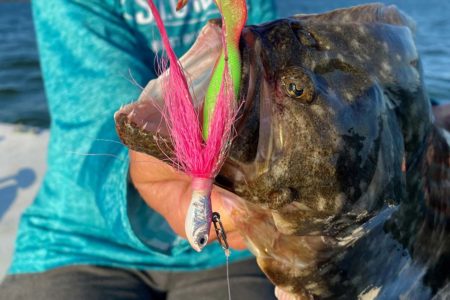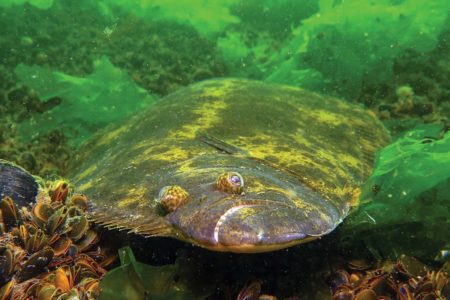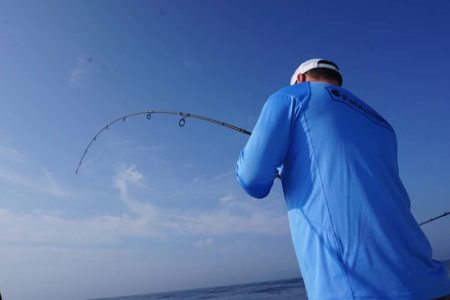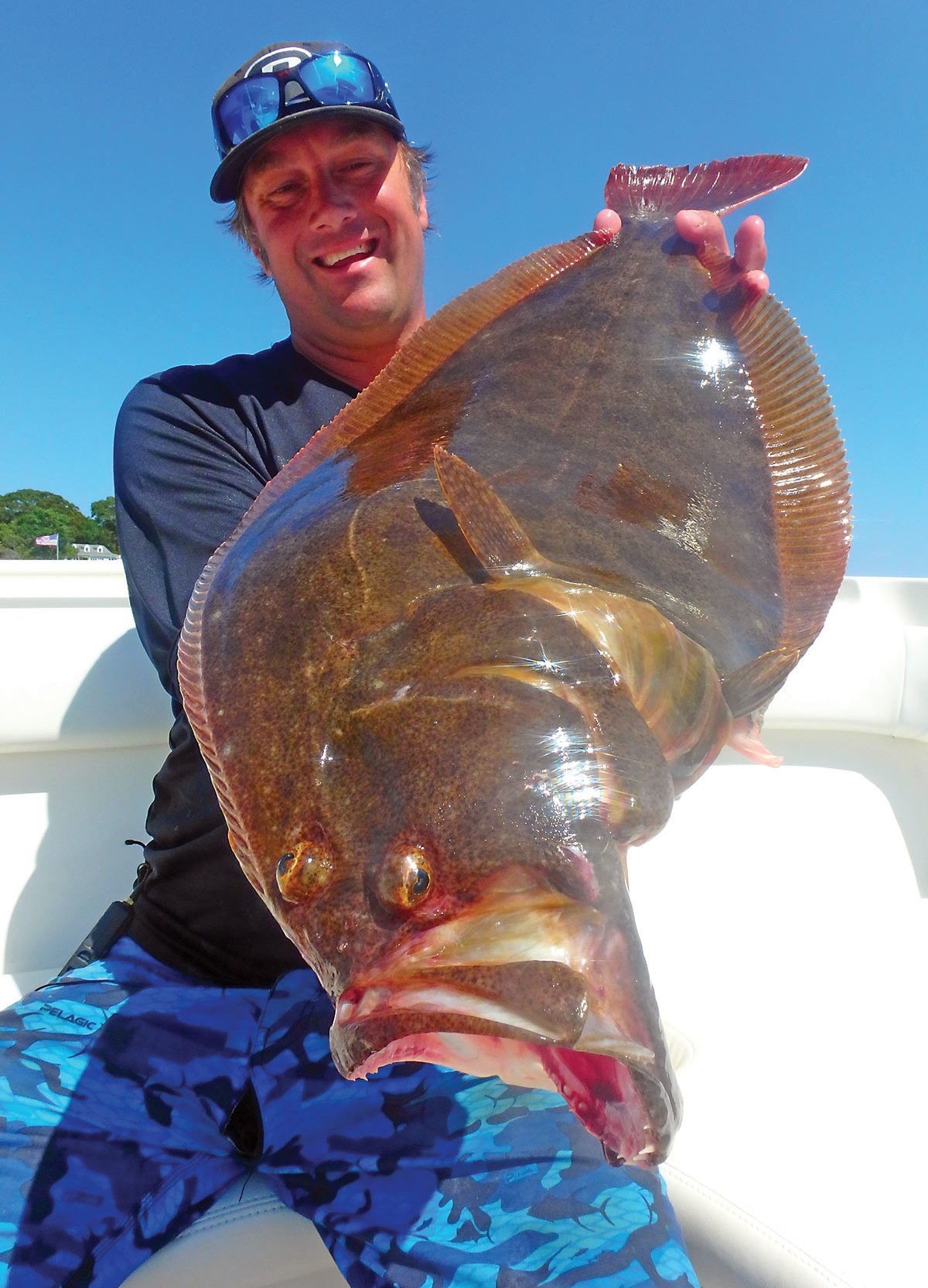
Late summer fluke action is often the best and biggest of the season, worthy of Dream Boat focus!
Heading into the dog days of summer, it’s not just beachgoers searching out shade and cooler climes, fluke are on the move to hunker down deep in channels, holes and offshore structures as they start making their way out to their wintering grounds at the Continental shelf.
The serious push of the migration won’t really happen in earnest until late October, but by September, fluke are definitely pushing outward and offshore and you’ve got to get the right tackle and tactics to target doormats on the move.
An eclectic array of fluke grounds exists from New England through New Jersey and the Delaware Coast. Perennial August and September hot spots rattle off easily to any fluke pro; including the deeper water structures and channels of Ambrose Channel, Nantucket Shoals, Rattlesnake Rocks, Montauk, Long Island’s South Shore reefs, Barnegat Ridge, the Old Grounds and many more fluke friendly locales. The key is to isolate your spots in your region and pick the deep water that has all the variables to add up to doormat haunts: depths from 70 to 130 feet, structure of mussel beds, rocks or ridges, and the right drift. Add up all three factors and doormats are bound to be around.
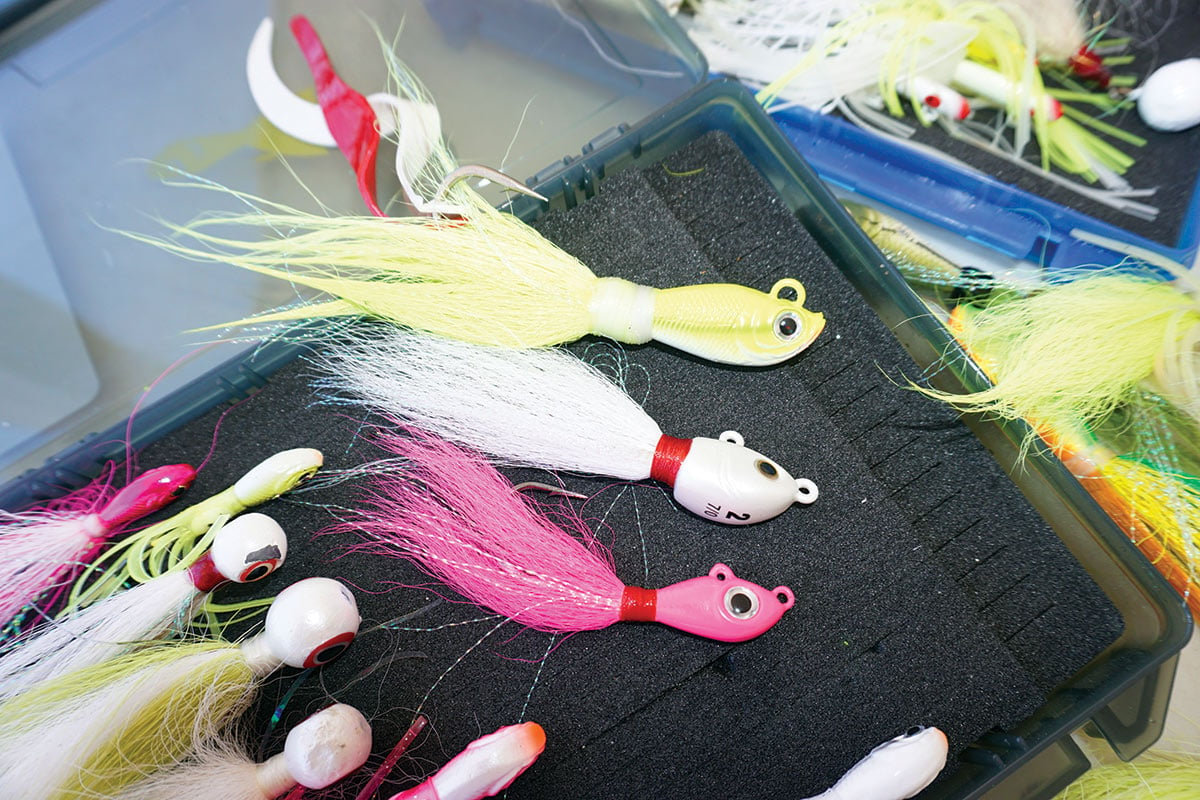
Bucking Up
Slow drifts call for bucktailing. Break out the bucktails for anything under a 1-knot current. Bucktails offer a lively approach to fluke waiting lazily around for a jumpy bait to swim on by seemingly ignorant of its surroundings. Spro 3- to 6-ounce bucktails, rigged with a 3/0 Gamakatsu octopus stinger hooks are top choices. Drape a long strip bait on the hooks to bounce-tap the bottom. Double buck it up with a light 1/4- to 1/2-ounce bucktail on a dropper loop teaser roughly 20 inches above. Bucktailing is best around rocky structures on slow drifts, with optimal conditions allowing you to fancast out upcurrent and bring it bouncing back to the boat. Go with the lightest bucktail you can afford to still have a relatively up and down approach, but anytime you are over a 45-degree angle on a drift, up the size another ounce until you’ve trimmed down that angle and are fishing more vertically.
Deepwater drifting often calls for the long baits to boot. Start with a braid-friendly fishfinder slide clip, a 75-pound Spro barrell swivel, a 30-inch section of 30-pound Seaguar or Yo-Zuri fluorocarbon leader and 3/0 to 4/0 Gamakatsu octopus hooks. A finely tapered strip bait of legal fluke belly, false albacore or salmon belly, or even long cocktail bluefish strip will get the proper flutter. Cut the bait in a thin strip, roughly an inch wide and anywhere from 8 to 12 inches long, tapering it at the top and bottom to a point so that there is minimal water resistance that would normally spin and circle the bait, which is no good. You want a bait that “swims” naturally through the water.
The dropback is the key, feeling the strike of a fluke grabbing the bait, but freespooling back to the bite, giving it a solid “five count” allowing the fluke to engulf the entire strip, then tripping the bail and setting the hook. Strip baiting works wonders when drifting over sandy humps, bumps, ledges and ridges.
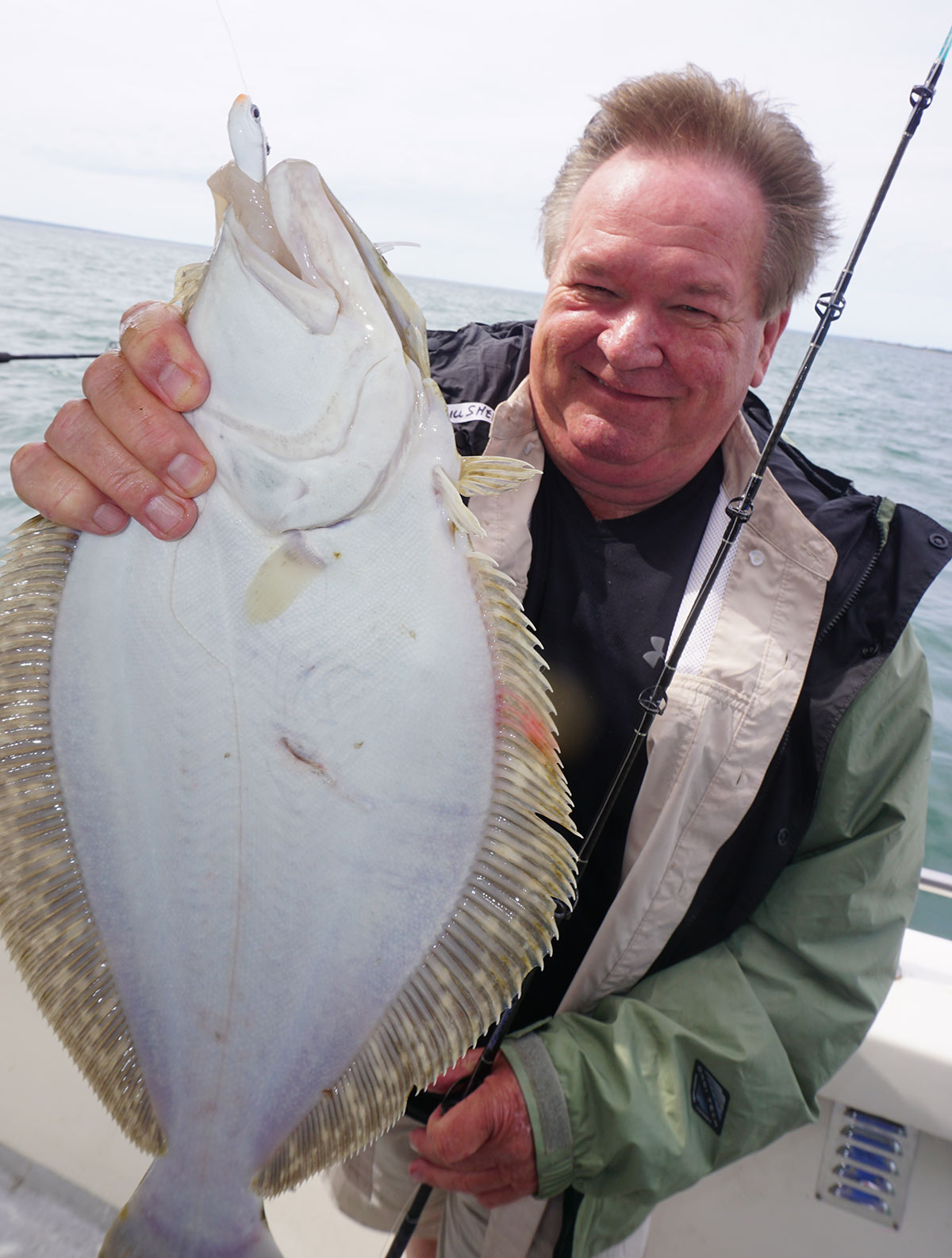
Drifts & Droppers
When on a normal drift, whether fishing structure or ridges, standard operating procedure is to utilize three way swivel rigs with a sinker snap, then 36-inch 30-pound leader if a fast drift over 2 knots, and a shorter 20-inch leader if drifting slow—the theory being the slow drift and short leader will keep bait on bottom, while a quick drift and long leader will let the long slack of the line flutter down in respective flow.
On the tag end of the leader is a two-hook tandem rig tied with 4/0 to 5/0 Gamakatsu octopus hooks. Baits on drift rigs can be large whole loligo squid, Peruvian smelts or large sand eels, all hooked once at the tip of the bait and the second hook midway down. Downsize to one hook if using live snapper blues, peanut bunker or live spot and hook the live baits through the nostrils for an effective natural drift.
Deepwater conditions may mean sick currents where an unconventional fluke rig is needed. To beat the swing, go with the hi-lo type dropper rig, which you would usually use bottom fishing for sea bass, but modified. Start with a 100-pound barrel swivel tied to a 36-inch piece of 30-pound fluorocarbon leader, 12 inches down tie a dropper loop with 9/0 baitholder hook tipped with a 6-inch Berkley Gulp! grub or swimming mullet, then 18 inches down from that another dropper with 9/0 baitholder with Gulp!, then 6 inches down a double overhand knot where the bank sinker is looped on.
Any moderate flex rod with medium to heavy action like a 6-1/2- to 7-foot Tsunami Slimwave or Lamiglas 7020BL matched with a tight spool like a Shimano Torium 20 or Avet MXL will give you all the power to work all manners of drift rigs and bucktails. Thirty- to 50-pound Power Pro braided line is the primo running line to spool up with, along with an 8-foot top shot of 40-pound Seaguar or Yo-Zuri fluorocarbon leader, tied via uni to uni knot between the braid and the rig so as to allow a little bit of give when fighting a large fluke while also allowing for the sensitivity for the hookset. An assortment of bank sinkers from 6 to 12 ounces will get you grounded on the drift rigs.
Listen, it’s time to follow fluke out deep. Get set up, prepare with the proper lures, tactics and techniques and find some doormats of 10 pounds plus in your cooler this early autumn.
| 9 NOR’EAST HOSPOTS |
|---|
|
These nine hotspots from south to north are where you might expect to hit that Dream Boat doormat before 2018 fluke season comes to a close. 1- Old Grounds: The starting point of the expansive 90- to 120-foot deep Old Grounds is the DB Buoy approximately 20 miles from the tip of Cape May (38 38.269 N / 74 52.184 W) and a bonus is the nearby Delaware Reef Site 11. 2 – The Tabletop: Spotlighted hotspot in New Jersey edition in July (39 09.201 N / 74 30.722 W) this plateau surrounded by deeper holes along the 10-fathom line provides ample structure for big flatties in mid to late summer. 3 – Ambrose Channel – Consistent producer of August and September doormats, this deepwater shipping channel leading into NYC is not for the faint of heart. If you’re working near the flashing AC Buoy (40 33.149 N / 74 1.836 W) and hear freighter’s horn blow, get moving! 4 – Montauk South Side – Last August/September produced incredible numbers of fluke over 10 pounds. Fisherman artist Savio Mizzi landed three over 11 pounds on the same day. 5 – South Shore wrecks like the Wolcott (40.35. 016 / 72.58.767) are always a good bet for that double digit doormat and decent numbers of quality fluke in late summer. 6 – Eatons Neck Triangle – Long Island Sound anglers score some big fluke in this area during the late summer months. Drifting live snappers has produced more than its share of quality fluke in the waters bordered by the OB Buoy and Buoy 13. 7 – Isabella Beach: The rocky bottom from Wilderness Point to the east end of Fishers Island regularly produces doormat fluke in the summer, with the deeper, 100-foot depths holding some of the largest fish as the season progresses. Be ready to lose some gear as the rocks here can be as hungry as the fluke at times, but this broken bottom is what attracts and holds the fluke right on into the fall. 8 – The Windmills: A rather new hotspot by name, the waters around the wind turbines located just shy of 3 miles off the southeast corner of Block Island have quickly become a go-to for local flukers. If this area isn’t producing on a given day, work west along the south side of Block towards Southwest Ledge as this entire stretch can hold fish. 9 – The Nantucket Shoals: This rather expansive area located off the southeast corner of Nantucket is known as the land of doormats by many, and for good reason. Acre for acre, these waters produce more double-digit fluke each season than any other spot in New England. |
